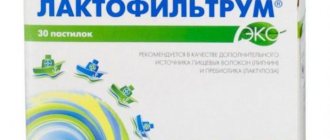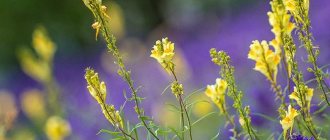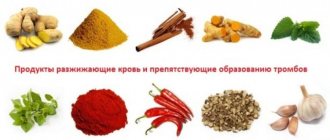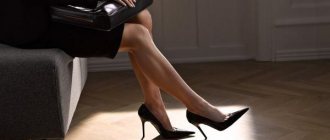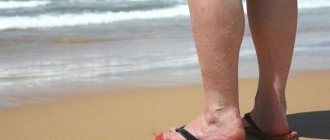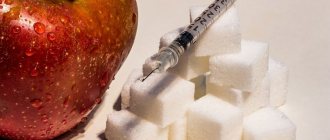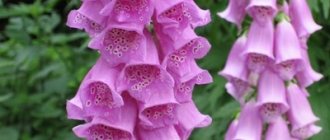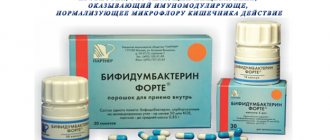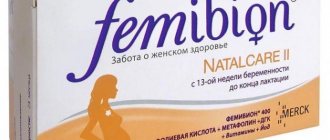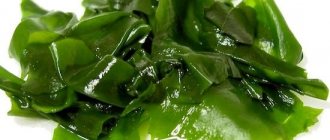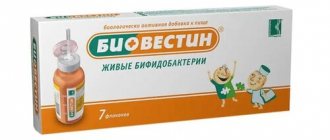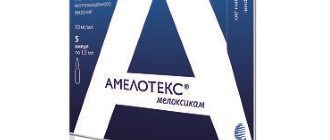Echinacea is a medicinal plant that has a pronounced immunostimulating effect. Widely used in official and folk medicine. The most popular dosage forms are echinacea tincture, lozenges and solution, which are prescribed for the treatment and prevention of many diseases, including in children. Herbal preparations are well tolerated by patients and, according to patient reviews, have the desired therapeutic effect.
Clinical and pharmacological group: immunostimulating drugs.
Medicinal properties and composition of Echinacea
Echinacea purpurea is a medicinal herb, the extract of which is included in immunostimulating medications. It has healing properties and a large number of healing substances. All parts of the plant contain:
- echinacosides;
- chicoric acid;
- kaempferol;
- caffeic acid molecules;
- hypoxanthine;
- bioflavonoids.
Enzymatic Therapy, Esberitox, Supercharged Echinacea, Immune Support, 100 Chewable Tablets
★★★★★
1 040 ₽
Buy at a discount
The roots contain resins, betaine, and organic acids. The herb is also rich in polysaccharides, phytosterols, and essential oils.
Supplements are made from this plant that can be used when the first signs of a cold, ARVI and acute respiratory infections appear, and can also be taken by people living in environmentally unfavorable areas. The immunostimulating, anti-inflammatory, antiviral and antibacterial properties of this plant have also been confirmed by many studies.
Preparations based on echinacea improve metabolism, as well as:
- activate the liver and kidneys;
- protect cells from free radicals;
- normalize blood clotting;
- accelerate tissue regeneration;
- relieve pain;
- stimulate the production of their own interferon.
Attention! The herb extract inhibits the growth and reproduction of bacterial flora, especially staphylococci and streptococci, and helps in the treatment of joints, prostatitis, and diseases of the female genital area.
Collection and preparation, cultivation
In folk medicine, it is recommended to harvest all parts of the plant:
- flower baskets are cut from the stems in July-August;
- grass - at the very beginning of flowering;
- roots with rhizomes, which are at least 4 years old - in late autumn.
The roots are washed and dried in the shade. The grass and inflorescences are also dried in the air, in a well-ventilated place, in the shade.
The shelf life of the grass is 6 months, inflorescences – 1 year, roots – 2 years.
The seeds of this useful plant can be purchased in the gardening department of the store. It will take a long time to germinate them, more than a month, so they should be planted in February (they love warmth and moisture). Seedlings are planted in the ground at the end of May, in light, fertilized soil, choosing a well-lit place. Flowering of the bushes begins in the 2nd year.
A simpler way is to divide the root. This can be done in spring or autumn by planting part of the root shoots deep into the hole.
Indications for use
The plant-based supplement is prescribed as an additional agent for antiviral or antimicrobial therapy of the following diseases:
- acute respiratory infections and acute respiratory viral infections;
- first signs of flu;
- weakening of the immune system;
- colds;
- herpes virus;
- upper respiratory tract infections;
- damage to the oral mucosa (gingivitis, stomatitis);
- cystitis and other diseases of the urinary system.
The drug also helps to cope with gynecological inflammation in women and prostate hyperplasia in men, stimulates the immune system, helps cleanse the lymph nodes and blood of toxins, and accelerates regeneration processes. It is also useful to use it during chemotherapy.
Attention! Healthy people can take a remedy based on this herb during increased physical and mental stress.
pharmachologic effect
Echinacea has a complex chemical composition that provides a complex positive effect on the body. Contains immunostimulating polysaccharides (water-soluble), which are capable of activating cellular immunity: stimulating the chemotaxis of granulocytes and increasing the phagocytic activity of macrophages. Participates in the release of cytokines, which leads to proliferation and activation of immunocompetent cells. Accelerates the processes of transformation of B-lymphocytes into plasma cells, activates antibody formation and the activity of T-helper cells.
Has an anti-inflammatory effect. Normalizes metabolic processes, especially in the kidneys and liver.
A course of treatment leads to an increase in the nonspecific immune response and improved resistance to negative environmental factors, including viral, fungal and bacterial infections.
Numerous studies have revealed activity against herpes, influenza and other viruses that cause colds, and an inhibitory effect on bacterial and tissue hyaluronidase has been proven.
However, it cannot be said that Echinacea is important for immunity and should be taken by all people, regardless of the state of the body's defenses. The general opinion of doctors is that interfering with the natural functioning of the immune system does not lead to anything good, and it is definitely not worth taking immunostimulants without the need! Use for prevention should also be justified - if a person rarely gets colds, it means that the body protects itself well from viruses. To boost immunity, it is not at all necessary to take medications, even herbal ones - just eat well and nutritiously, drink enough clean water, be physically active and mentally balanced - this is more than enough!
Contraindications and precautions
The instructions indicate that the tablet preparation of Echinacea has a number of contraindications for use. These include:
- individual intolerance to plants of the Asteraceae family or components included in the medicinal product;
- AIDS, HIV infection;
- atherosclerosis;
- pulmonary tuberculosis;
- leukemia;
- multiple sclerosis;
- autoimmune disorders;
- children up to 4 years of age (for some drugs - up to 12).
This remedy should not be taken by women during pregnancy or lactation, since the effect of the herb on the fetus and the baby’s body has not been sufficiently studied. If such a need nevertheless arises, treatment should be carried out under the supervision of a doctor.
Attention! In case of chronic liver diseases, hypertension, diabetes mellitus, and brain injuries, the decision on the advisability of prescribing an herbal supplement should be made by a specialist.
Stories and applications
Echinacea was first described by Carl Linnaeus in his works on botany. Since the 70s of the 20th century, it began to be grown as a garden crop, and several varieties were bred.
The Soviet scientist S.A. Tomilin studied this plant in great detail and recommended echinacea preparations for tonsillitis, sore throat, depression, fatigue (mental and physical), parametritis, inflammatory processes in internal organs, acute and chronic infectious diseases (typhoid fever, erysipelas, diphtheria, osteomyelitis, cerebral meningitis), as well as for the treatment of wounds, burns, ulcers. His work greatly contributed to the introduction of the plant into traditional medicine and homeopathy.
In folk medicine, the plant was used to a greater extent to treat various infections and wounds.
Some plant varieties, including purple, are grown by gardeners for decorative purposes, decorating flower beds and front gardens. It blooms beautifully and for a long time, and looks very aesthetically pleasing, and lasts a long time in a vase after cutting.
Release forms and their features
There are several forms of release of tablets. They all contain the same active ingredient - dry echinacea extract, but a different set of additional components. Therefore, supplements can affect the body in different ways.
Table - Tablet forms of release
| Dosage form | Advantages | Flaws |
| Regular tablets | Convenient to use, have a prolonged effect. Doctors prescribe them for the treatment and prevention of diseases, boosting immunity | Long digestible |
| Chewable tablets | They come in the form of lozenges and are suitable for children and adults who have difficulty swallowing. Lozenges do not need to be washed down with liquid | They contain a lot of sugar and can cause allergic reactions. They are used only to treat the throat |
| Lozenges (lozenges) | They slowly dissolve in salivary fluid, immediately enter the bloodstream, and help relieve sore throat. The lollipops are easy to swallow and do not need to be washed down with water. | Contains flavoring additives |
| Dragee | Small size makes the drug easier to use | The product is slowly released, poorly absorbed and contains a low concentration of the active substance |
Benefits of capsules
The drug substance, enclosed in a gelatin shell, is convenient for patients to take due to the precisely measured dose of the drug and the ease of swallowing the smooth pill if the product has an unpleasant taste or odor. The raw materials from which the capsule is produced prevents the receptors in the mouth from contact with the filler.
In addition, pharmaceutical companies often make the external design of the shell attractive by using different colors and applying the company logo to avoid product counterfeiting. In some cases, capsules can be opened to empty their contents and mix with food.
Typically, the gelatin shell dissolves quite quickly in the gastrointestinal tract, while absorption of the filling occurs unhindered in minutes. However, special capsules may contain substances that have a prolonged effect.
Most often, alcohol is not used to produce Echinacea capsules. This is important if alcohol is contraindicated, the supplement needs to be given to a child, or you are driving or working in an enterprise where concentration is important.
The capsules are convenient to take with you on the road or to work. They do not require special storage or transportation conditions.
A significant advantage of the capsule form is its ease of use, the absence of special skills and experience of patients.
Drugs
Medicines with Echinacea can be purchased at any pharmacy or ordered from an online store. But the prices there are most often inflated, and the quality does not always meet the standards.
We recommend ordering echinacea tablets from iHerb.com. This well-known online store offers a wide selection of quality products, prices 30-50% lower than pharmacy prices, many customer reviews and fast delivery worldwide.
Buy echinacea tablets at
Get up to 10% discount using our promo code:
AGK4375
Activate
The promotional code is activated in the cart after adding the 1st product and is valid only for the 1st order.
TOP 5 tablets with Echinacea:
Nature's Way, Esberitox, Supercharged Echinacea, 200 Chewable Tablets
★★★★★
1 728 ₽
Buy at a discount
Nature's Way, Esberitox, Supercharged Echinacea, 100 Chewable Tablets
★★★★★
1 042 ₽
Buy at a discount
Zand, Herbal Tablets, Echinacea & Zinc, Cherry Flavor, 80 Tablets
★★★★★
901 ₽
Buy at a discount
Natural Factors, Quick-Blast, Instant Minty Blast, 30 Liquid Gel Softgels
441 ₽
Buy at a discount
See the full catalog of products at the link:
show all
Where is the most convenient and best place to buy echinacea capsules?
The most practical way is to purchase the product on the website of the American company iHerb, founded in 1996. The store provides an impeccable match between cost and quality. The company organized fast delivery of certified goods, the range of which includes more than 30 thousand items.
The quality and freshness of dietary supplements is beyond doubt thanks to the latest equipment of warehouses with the most modern technological climate control systems that protect packages with additives from adverse environmental conditions.
The company guarantees the protection of the personal data of its customers.
An additional bonus is a flexible system of discounts for purchasing 2 or more items and for delivery. Promotions and sales are regularly held, and there is a reward program for recommending the company.
Dosage and regimen
The annotation says that the tablets are taken orally. The standard preventive dosage for adults is 900 mg per day, and the therapeutic dosage is 1500 mg.
The drug is taken after meals with a sufficient amount of water. A single serving is 1-2 tablets. The course of treatment is from 1 week to 2 months. Children are prescribed 1 tablet three times a day.
When combining the supplement with antibiotics, it should be taken 2 pieces. twice a day for 5 days. Then 1 tablet in the morning and evening for 2-3 weeks.
Lozenges and chewable lozenges are used regardless of meals, if necessary. The standard dose is 1 pc. 3-4 times a day. The course of therapy is 1 week.
Attention! The dose rate and frequency of use of the drug for the treatment of a specific pathology should be prescribed by a doctor.
Morphological description
The height of the plant reaches 80–120 cm. The stems are straight or slightly branched, covered with bristly hairs. The multi-headed rhizome is highly branched, numerous roots penetrate deeply into the soil; when cut they have a very pungent taste.
Leaves are divided into two types: stem and basal:
- The stem leaves are lanceolate in shape, narrowed towards the petiole, have a lush green color, and are rough to the touch. They are arranged alternately on the stem.
- The basal leaves are slightly serrated, located on long petioles collected in rosettes. The shape resembles a wide oval, sharply narrowed towards the petiole.
Blooms in the 2nd year of life. Flowering begins at the end of May - beginning of July, the duration of this period is up to 75 days. The inflorescences are purple-violet, rather large baskets and shaped like a chamomile. The size of the baskets is 10-12 cm. The core consists of tubular-shaped flowers of reddish or brown color and protrudes dome-shaped above the inflorescence. Reed flowers are pointed at the ends and have an underdeveloped pistil; and bisexual tubular ones are distinguished by a reddish-brown color.
Propagates well by seeds and grown through seedlings. Can reproduce by dividing the rhizome. Only tubular flowers bear fruit. The fruit is a tetrahedral, oblong brown achene, 5–6 mm long, with a small tuft.
Overdose
Echinacea-based medications should be taken according to the instructions or doctor's prescription. It is especially contraindicated to exceed the dosage, otherwise the treatment may cause harm to the body, as well as provoke the following side effects:
- changes in blood pressure;
- tachycardia;
- overexcitement;
- insomnia;
- headache;
- diarrhea, nausea.
If such symptoms appear, you should stop taking the pills and consult a doctor..
Echinacea tincture or tablets – which is better?
Comparing echinacea preparations for enhancing immunity in the form of an alcohol tincture and in the form of tablets, most experts agree that it is better to give preference to tablet preparations. This is due to the fact that the tincture contains ethanol, which increases the list of contraindications and side effects of the drug. In addition, the tincture is less convenient to dose, which increases the risk of overdose with the development of adverse reactions. However, we note that the advantage of alcohol tincture is its affordable cost.
Reviews about the application
To leave a review, fill out the special form below:
| Leave feedback | |
| 1 2 3 4 5 | |
| Send Cancel | |
Send your review
Echinacea tablets
Average rating: Number of reviews: 0
Most buyers leave positive reviews about the use of echinacea tablets. Consumers generally note that supplements in this form produce almost no side effects and are convenient to take for the prevention of respiratory diseases. Many people claim that dietary supplements actually reduce pain and redness in the throat.
But there are also negative reviews. In them, buyers mainly complain about the tart taste that appears when the tablets are dissolved.
Side effects
Allergic reactions:
skin redness, itching, rash, urticaria, facial swelling, Stevens-Johnson syndrome, angioedema, anaphylactic shock, Quincke's edema.
From the respiratory system:
difficulty breathing, shortness of breath, bronchospasm with obstruction, bronchial asthma.
From the central nervous system:
dizziness, sleep disturbance.
From the cardiovascular system:
arterial hypotension.
From the digestive tract:
nausea, vomiting, diarrhea, abdominal pain.
There have been isolated reports of an association with autoimmune diseases (disseminated encephalomyelitis, erythema nodosum, immunothrombocytopenia, Evans syndrome, Sjögren-Larsen syndrome with impaired renal tubular function).
With long-term use (more than 8 weeks), leukopenia may occur.
Storage and shelf life of supplements
Regular Echinacea tablets retain their beneficial properties for 2 years, lozenges and lozenges for 3 years.
The drug should be stored in a dark place, out of reach of children, at a temperature of 20-25° C.
EuroPharma, Terry Naturally, AnxioCalm, Calm, 90 Tablets
★★★★☆
3 763 ₽
Buy at a discount
Echinacea for children
Herbalists and traditional healers recommend using plant preparations in pediatrics, starting from 1 year. Representatives of official medicine are somewhat more restrained about such conclusions and advise not to use echinacea preparations before 3 years. Preferred dosage forms are syrup, tea, decoction. Alcohol tincture can be used for children under 12 years of age only externally, to treat acne and skin lesions.
Echinacea preparations are recommended for children primarily to strengthen immune defense and increase resistance to infectious agents that children constantly encounter in kindergarten and school. Also used in complex therapy of viral and bacterial infections of the respiratory system, ENT organs, oral cavity, skin and genitourinary tract.
Drug interactions
The instructions indicate that echinacea can be taken simultaneously with antiviral agents and antibiotics, except for drugs of the cephalosporin group. Their combination leads to a number of adverse reactions - headaches, tachycardia, night sweats. It is also undesirable to take herbal supplements in conjunction with corticosteroids and immunosuppressants. Echinacea reduces the effectiveness of the latter.
Attention! The effect of the herb can be enhanced by other immunostimulating plants - eleutherococcus, ginseng, Rhodiola rosea.
However, if used incorrectly, such a combination can cause an overdose. It is safer to use rose hips as an additional product, the fruits of which contain a large amount of vitamin C.
At the pharmacy you can buy a complex dietary supplement with two plants: echinacea extract (200 mg) and rose hip extract (150 mg). The drug exhibits antiviral and immunostimulating properties and is suitable for preventing the body during the cold season.
special instructions
Pills
Information for patients with diabetes: the carbohydrate content in 1 tablet is 0.024 XE (bread units).
Lozenges, lozenges
You should not take the drug for longer than 8 weeks.
Homeopathic granules
When using Echinacea, a short-term exacerbation of symptoms may occur. In such cases, you need to interrupt therapy and consult a specialist.
Information for patients with diabetes: the carbohydrate content in 5 granules (single dose) is 0.01 XE.
Alcohol compatibility
Echinacea should not be combined with alcohol. Ethanol reduces the effectiveness of the herb and also provokes adverse reactions.
Echinacea-based tablets stimulate the immune system, prevent infections, and support the body during antibiotic therapy. They are also often prescribed for the treatment of urinary tract inflammation and poorly healing wounds. Supplements in this form are available without a prescription, but are recommended to be taken only after consulting a doctor.
Did you like the article? Share it on social networks.
Compound
active ingredient:
1 tablet contains dried juice of Echinacea purpurea, squeezed from the above-ground part during the flowering period, calculated as dry matter 100 mg;
Excipients:
sorbitol (E 420), sodium cyclamate, magnesium stearate, colloidal anhydrous silicon dioxide.
Dosage form.
Pills.
Basic physical and chemical properties:
tablets are round in shape with a biconvex surface and scored on one side, gray in color with a faint creamy tint, interspersed with a more intense color.
Pharmacotherapeutic group.
Immunostimulants. Code ATX L0ZA X.
Tablets, pastilles and granules
In addition to the active component, they contain starch, calcium and lactose. Thanks to a special additive, the marshmallow has a caramel aroma. It also contains magnesium stearate and sorbitol. In addition, you can sometimes find echinacea granules on sale. In addition to the main component, they contain sugar.
All drugs are taken exclusively orally and no more than three times a day. Tablets are not recommended for use for more than one week, while granules can be used for 14 days.
Storage rules
Echinacea in granules is stored for two years at a temperature not exceeding twenty-five degrees. Despite its herbal composition and complete safety, it is recommended to keep it away from pets and small children. The tablets also have a shelf life of no more than twenty-four months, while the shelf life of the marshmallow is three years. Among foreign-made drugs, analogues of Echinacea Premium are Estifan, Echinacea tincture from Doctor Theis, and Echinacea Compositum, produced in Germany.
